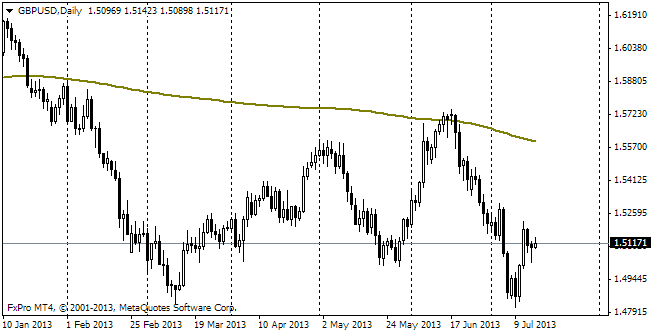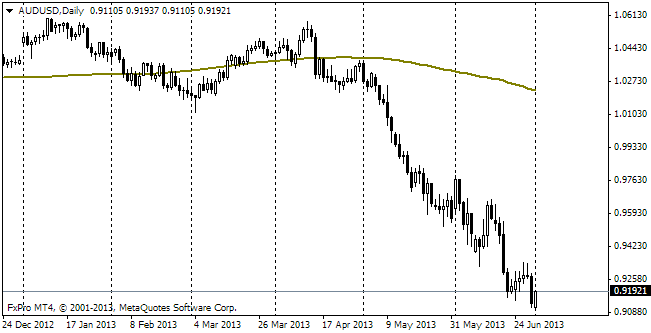EUR/usd
The euro had managed to recover by the end of the day and close Monday positive. During the day eurusd went as high as 1.2714, but closer to its end the pair was pushed below 1.2700. The data on the US consumer spending surpassed expectations, showing that personal spending grew by 0.5% after going down by 0.1% a month before. The data went beyond expectations and indicated revival of demand, which can urge the Fed to initiate tightening, or in other words normalization of the monetary policy. Besides, the consumer and business confidence of the eurozone keep sliding down. Against such a background price stability in Germany is just formal consolation. Yesterday's consensus forecast supposed decline by 0.1% m/m and slowdown of the annual growth to 0.7%. However, prices didn't change over the month, which allowed keeping the annual inflation rate unchanged, though it remains the lowest one since 2010. Despite the relatively even statistics in Germany, it is expected that the EU CPI will go down to 0.3%. Apart from it, we also have unemployment statistics today. They don't have any special impact on the euro, but deserve attention among advocates of the fundamental analysis. It is supposed that the unemployment will remain at 11.5%, which means that the ECB still has to work hard to put the economy on steady rails. Here the market expects that the next step of the ECB will be to announce parameters of the ABS program. The survey conducted by Reuters this week pointed out that according to expectations the program should make about €200bln, which is a third as little as approximately a month ago. The reason for such a decrease in the expectations is low demand for TLTRO in September, showing that banks are not much interested in fresh investments.
GBP/USD
The cable also experienced influence of the contradictory statistics yesterday. At the beginning of the day it was under pressure due to the overall craving for safe assets. Besides, the data on mortgage approvals and M4 money supply proved to be not very favourable either. The consumer credit is slightly decreasing alongside price growth and earnings stagnation. But upon the whole we need to understand that it already doesn't look like crisis lows, but represent steady levels, which will sooner be to the likely of the BOE, which strives to prevent a bubble in the home loan market and also revive the consumer demand and labour market.

USD/JPY
The new high in the pair, reached yesterday, makes 109.74 and it is already within the reach for bulls. It is quite possible that the short-term tide of purchases, observed at the beginning of the EU session today, will be able to bring the pair closer to the round rate of 110 yens per dollar. Bulls should be supported by the poor performance of the industrial production and further decline of the household spending. Against this background the decrease in unemployment from 3.8% to 3.5% shouldn't stir vain hopes. Mostly, this decline has been caused by wastage rather than by increase in production.

AUD/USD
Yesterday the aussie also tried to form a bottom. It succeeded less than the EU currencies – the day was still closed negative. Anyway, today the pair is growing more actively, which gives hope for the further pullback against portfolio rebalancing.
